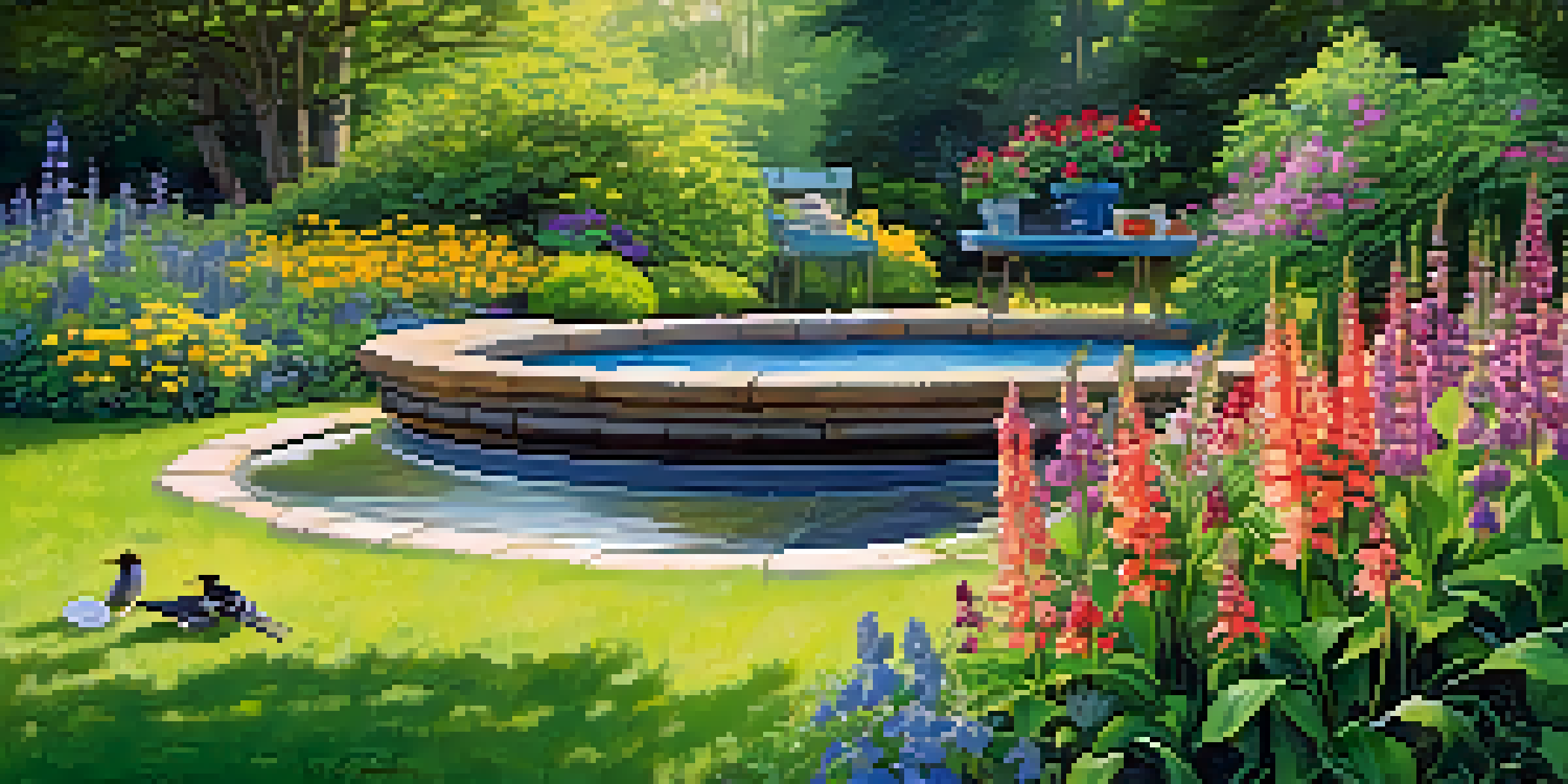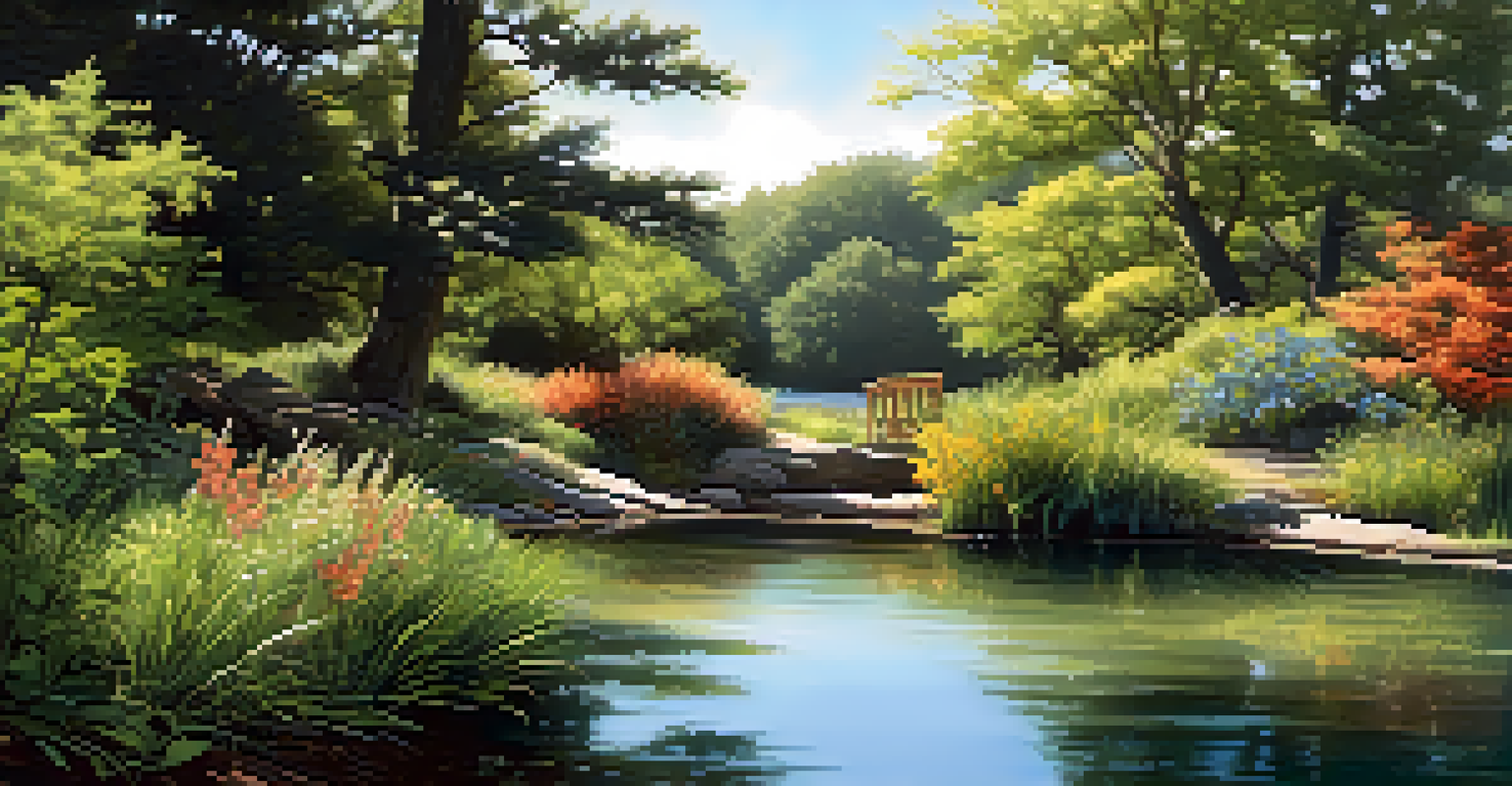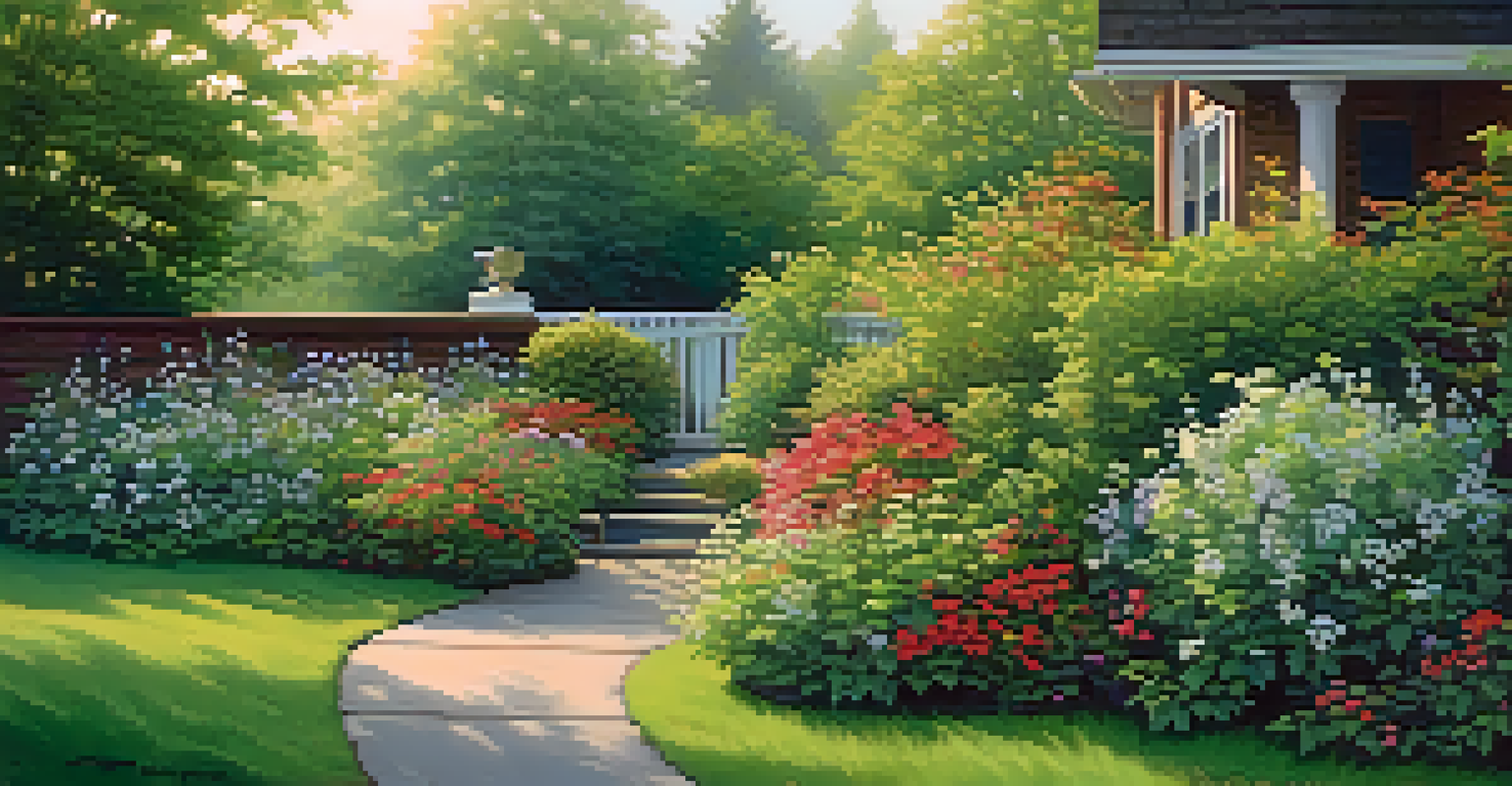Using Native Plants to Attract More Birds to Your Yard

Understanding Native Plants and Their Benefits
Native plants are those that naturally occur in a specific region, having evolved over time to thrive in local conditions. They play an essential role in maintaining the ecological balance of an area, providing food and habitat for local wildlife. By incorporating native plants into your garden, you can create a vibrant ecosystem that attracts various bird species and supports biodiversity.
The creation of a thousand forests is in one acorn.
One of the primary benefits of native plants is their adaptability. They require less water and fewer chemicals compared to non-native species, making them easier to maintain and better for the environment. This means you can enjoy a beautiful garden without the worry of excessive upkeep or negative impacts on local wildlife.
Additionally, native plants often produce seeds, fruits, and nectar that birds crave. By planting these species, you not only create a welcoming environment but also contribute to the overall health of local bird populations. It's a win-win for both you and your feathered friends!
Choosing the Right Native Plants for Your Region
Selecting the right native plants is crucial for attracting birds to your yard. Start by researching which plants are native to your specific area, as this will ensure they thrive in your local climate and soil conditions. Local gardening centers and online resources can be invaluable in helping you identify suitable options.

Consider incorporating a variety of plants that bloom at different times throughout the year. This approach not only ensures a continuous food source for birds but also creates visual interest in your garden. For example, early bloomers like Virginia Bluebells can provide nectar for hummingbirds, while late-season plants like goldenrods offer seeds for finches.
Benefits of Native Plants
Native plants require less maintenance and support local wildlife, creating a vibrant ecosystem in your garden.
Remember to mix in plants of varying heights and structures, such as shrubs, flowers, and grasses. This diversity will create layers in your garden, offering birds various perching and nesting spots. By thoughtfully selecting a range of native plants, you're well on your way to creating an inviting habitat for birds.
Creating Food Sources for Birds
Food is a primary motivator for birds visiting your yard, and native plants can offer a bountiful feast. Many native species produce berries, seeds, and nectar that are particularly appealing to different bird types. For instance, serviceberries attract robins and cedar waxwings, while coneflowers are a favorite for goldfinches.
To plant a garden is to believe in tomorrow.
Incorporating plants that bloom at different times ensures that food sources are available throughout the seasons. This strategy encourages birds to return to your garden regularly, enhancing your chances of observing various species. Plus, it adds an ever-changing dynamic to your landscape as different plants flourish at different times.
Don't forget about the importance of insects as a food source for many birds. Native plants often attract native insects, which are rich in protein and essential for nesting birds. By planting native flora, you're not just providing food directly but also supporting the entire food web that sustains bird populations.
Providing Shelter and Nesting Sites
In addition to food, birds need safe places to shelter and nest. Native plants can provide natural cover from predators and harsh weather conditions. Dense shrubs and grasses create excellent hiding spots, while trees offer both shelter and nesting opportunities for various bird species.
Consider incorporating plants with dense foliage or thorny branches, which can deter predators and offer a safe haven for birds. For example, a thicket of native blackberry bushes can be an ideal nesting site for songbirds. As birds feel secure in your yard, they're more likely to choose it as their home.
Attracting Birds with Food Sources
Incorporating a variety of native plants ensures a continuous food supply for birds throughout the seasons.
Also, remember that different bird species prefer different types of nesting sites. Some may favor low shrubs, while others might look for cavities in trees. By including a mix of plant types, you can cater to a diverse range of birds and increase their chances of making your yard their sanctuary.
Water Sources: A Vital Addition
While plants are essential, water sources are equally important for attracting birds to your yard. Birds need water for drinking, bathing, and maintaining their feathers, so incorporating a birdbath or small pond can significantly enhance your garden's appeal. Native plants can also help retain water and provide a natural setting for these features.
When adding a water source, ensure it's shallow enough for smaller birds to access safely. Consider placing stones or pebbles in the water to create landing spots. A gentle water feature can also attract birds while providing a soothing ambiance for your garden.
Don't forget to keep the water clean and fresh, especially in hot weather. Regular maintenance will ensure that birds feel safe and welcome in your yard, encouraging them to return. By combining native plants with accessible water sources, you'll create a thriving habitat that birds simply can't resist.
Minimizing Pesticide Use for Bird Safety
While caring for your garden, it's crucial to consider the impact of pesticides on birds. Many common pesticides can be harmful, not only to birds but also to the beneficial insects they rely on for food. By minimizing or eliminating pesticide use, you can create a safer environment for your feathered friends.
Instead of chemical treatments, consider natural alternatives for pest control. Introducing beneficial insects like ladybugs can help manage pest populations without harming birds. Moreover, focusing on healthy soil and diverse plant life can reduce the likelihood of pest issues in the first place.
Creating Safe Habitats
Native plants provide essential shelter and nesting sites, helping to protect birds from predators and harsh weather.
Creating a balanced ecosystem is key to attracting birds while maintaining a healthy garden. By nurturing native plants and reducing pesticide usage, you foster a welcoming environment that benefits both your plants and the birds that visit. It's all about working in harmony with nature.
Observing and Enjoying Your Feathered Visitors
Once you've transformed your yard into a bird-friendly haven, it's time to enjoy the fruits of your labor. Observing birds can be a rewarding experience, offering a deeper connection to nature right outside your window. Consider setting up a comfortable spot where you can sit back and watch as various species visit your garden.
Keep a journal or a sketchbook to document the birds you see. This practice can enhance your appreciation and understanding of the different species that frequent your yard. You might be surprised by the diversity of birds that are attracted to your native plants and water features.

Additionally, sharing your birdwatching experiences with friends and family can inspire others to create their own bird-friendly gardens. By spreading the word about the benefits of native plants and bird conservation, you're contributing to a larger movement that supports wildlife in our communities. Enjoy the beauty and joy that comes with attracting birds to your yard!